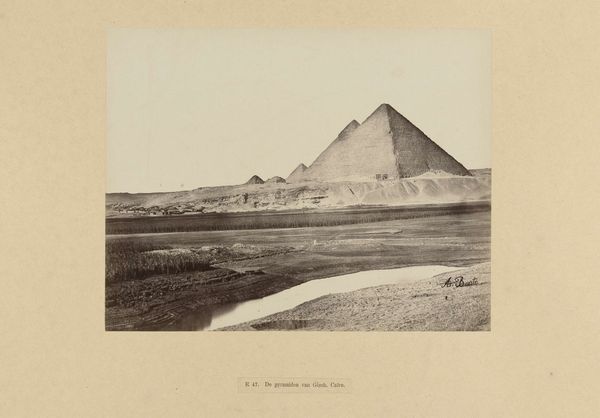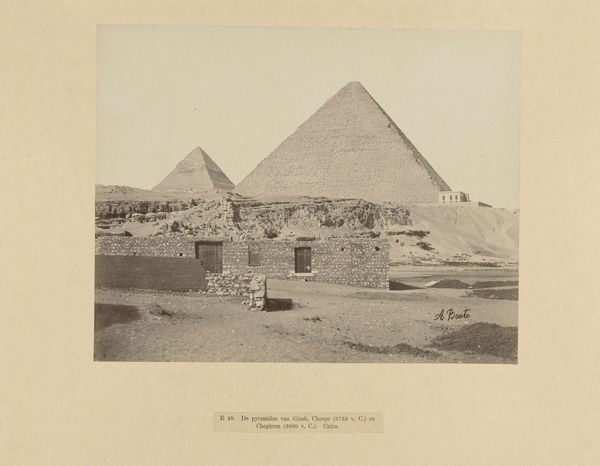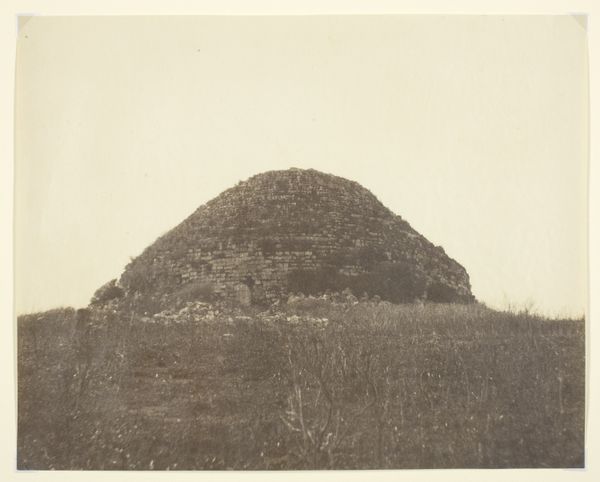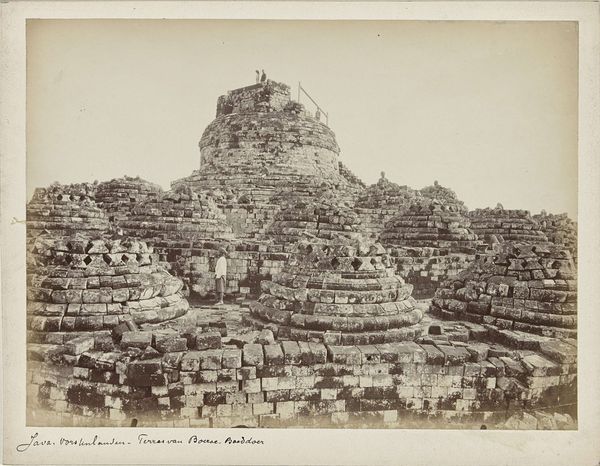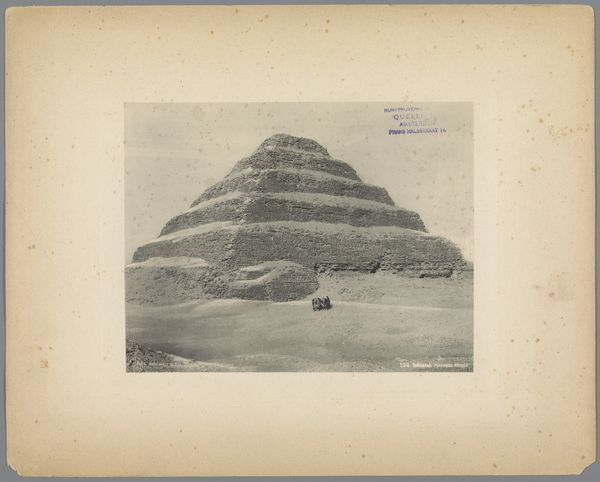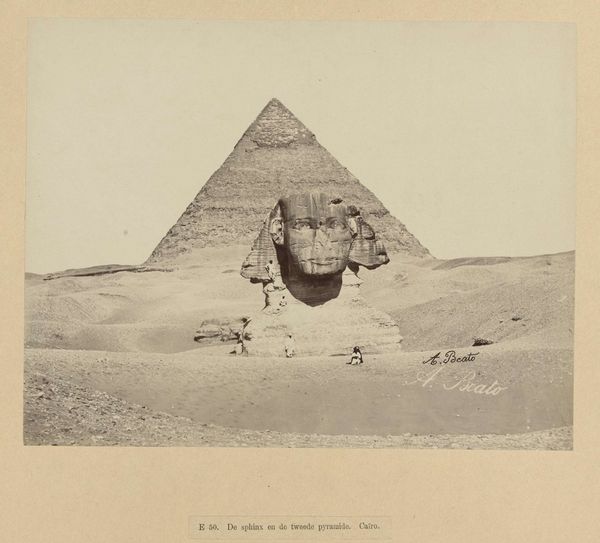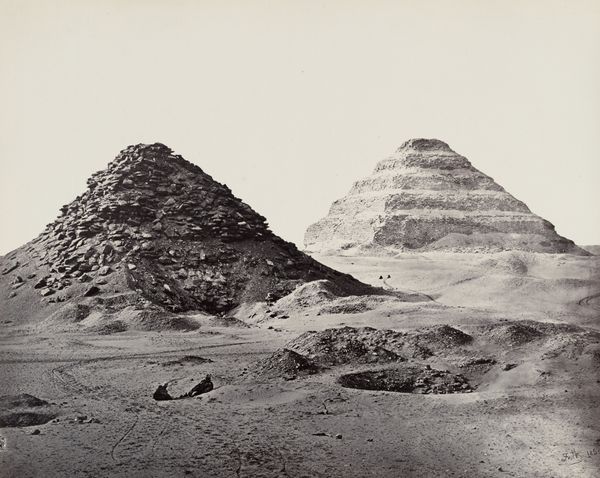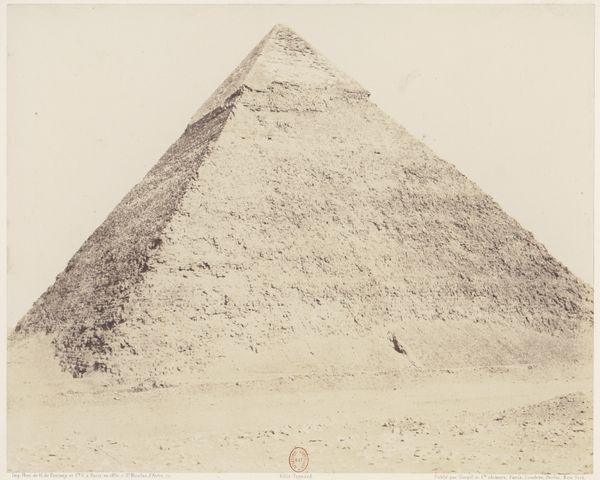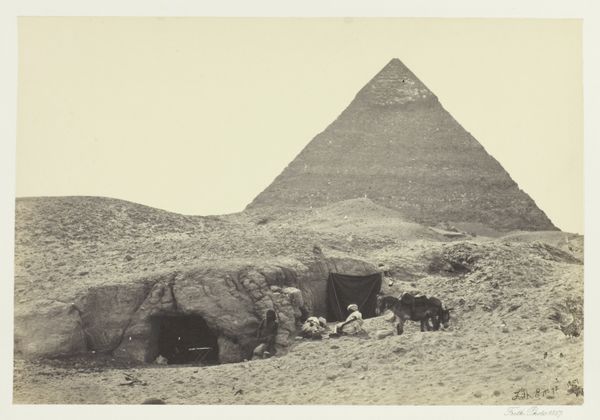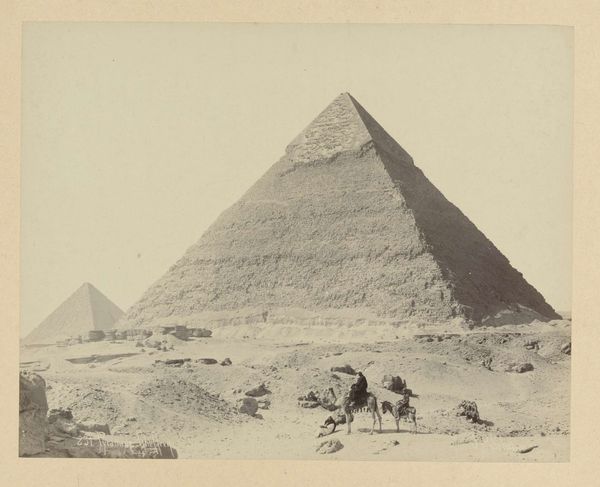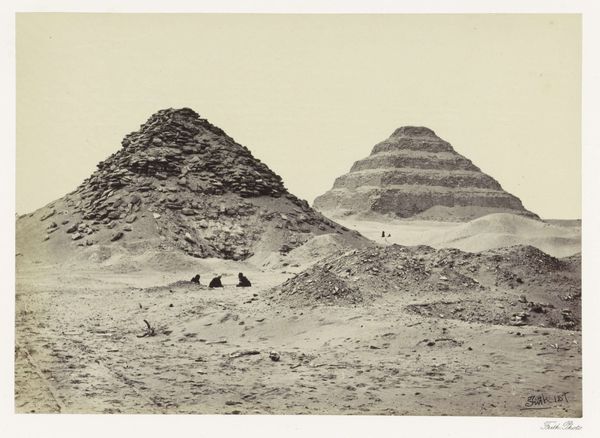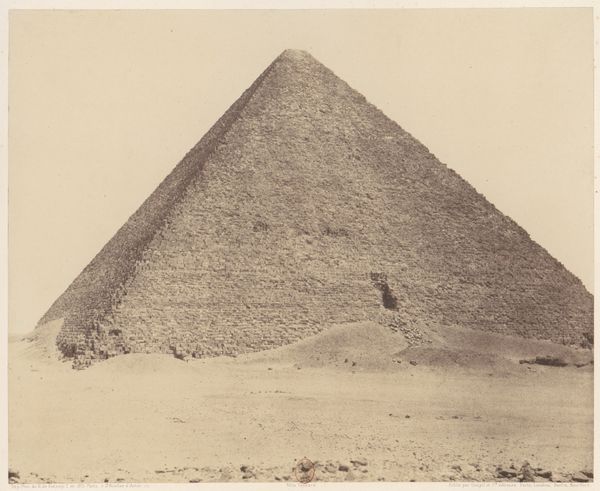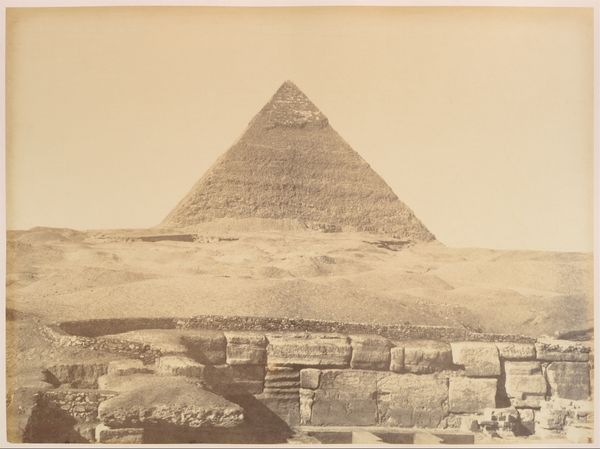
photography, site-specific
#
landscape
#
ancient-egyptian-art
#
photography
#
ancient-mediterranean
#
site-specific
Dimensions: height 204 mm, width 260 mm, height 469 mm, width 558 mm
Copyright: Rijks Museum: Open Domain
Editor: This photograph, taken by Antonio Beato between 1862 and 1895, captures the Pyramid of Djoser at Saqqara. It evokes a feeling of timelessness, of something ancient enduring. What strikes you most when you look at it? Curator: I'm drawn to how this image can act as a lens through which we examine the power dynamics of archaeological documentation. Photography like this, from the colonial era, often presented a very specific, Western gaze upon ancient cultures. How does the act of photographing the pyramid, framing it in a certain way, influence how we understand the site and its history? Editor: I hadn’t thought about the photographer’s role that way. So, in essence, Beato isn’t just recording, he’s interpreting, maybe even…appropriating? Curator: Precisely! And we must ask: Whose story is being told here? Who gets to control the narrative surrounding these ancient artifacts? How does that historical power dynamic affect contemporary discussions around cultural heritage and repatriation? Notice the vast empty space, which frames it? What is its intention? Editor: So, we’re not just looking at a picture of a pyramid; we're considering the political and social context within which it was created. The emptiness you noted almost silences any presence of the people. Curator: Absolutely. Consider, for instance, how images like these were used to promote European and American tourism in Egypt. There's an economic dimension too: turning ancient sites into commodities for a global market. And, furthermore, this has racial implications when a site and people are so intrinsically related. Editor: This image initially felt like a straightforward depiction, but now it seems like there's so much more layered beneath the surface. I didn’t consider the photographer’s intent and the historical context that surrounds it. Curator: Exactly! Questioning whose perspectives are privileged helps us decolonize how we study and appreciate art history. The image transforms from a simple visual record into a complex statement on power and representation.
Comments
No comments
Be the first to comment and join the conversation on the ultimate creative platform.
